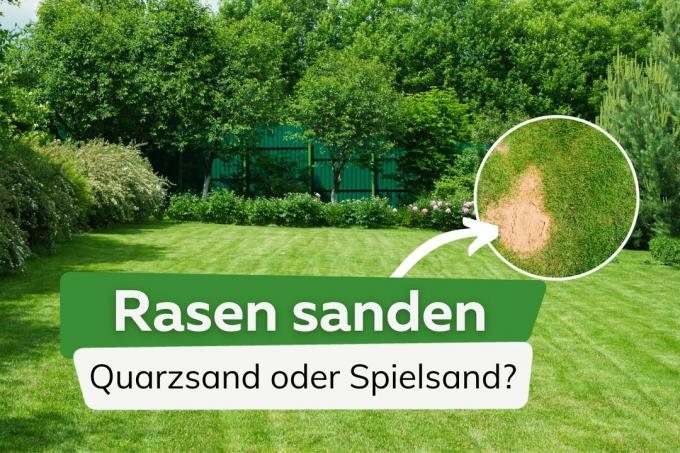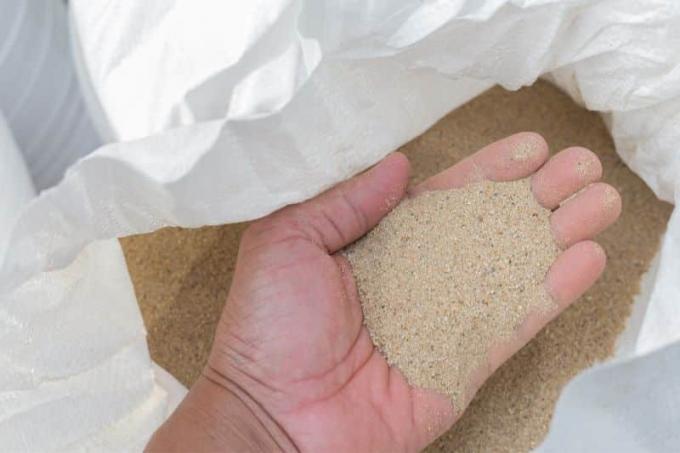
Sanding the lawn improves the soil structure and makes it more permeable to water and air. The sand affects the pH value, which is why the choice of rock is crucial for the quality of the soil.
In a nutshell
- Use quartz sand or play sand
- Quartz sand more expensive, but better quality
- select a fine-grained soil for heavily compacted soil
- Grain size for quartz sand should be between 0.6 - 2 mm
- Sieve play sand before use
Table of contents
- rock type
- grit
- frequently asked Questions
rock type
Quartz sand or play sand is mainly used for sanding lawns.
Advantages of quartz sand:
- low in lime
- does not affect pH
- does not clump
- favors soil permeability for a very long time

Advantages of play sand:
- inexpensive
- suitable for lime-poor soil
- suitable as a long-term mineral fertilizer
- designated as non-toxic and non-toxic
When buying, make sure that the sand is free of clay or silt in any case. This can have the opposite effect and additionally compact the soil.
A notice: Play sand often consists of calcareous rock. He can rely on the soil pH effect and should therefore only be used if the pH value needs to be increased.
grit
When it comes to the grain size of the sand, the recommendations differ widely. How fine or coarse the sand should be depends on the overall condition of the soil. As a guideline, the heavier the soil, the finer the sand should be. Which grain size is chosen also depends on the type of sand.

Average grit:
- Play sand: 0.5 – 1.5 mm
- Quartz sand: 0.6 - 2 mm
Tip: Play sand occasionally tends to clump. The sand should be sieved beforehand to make it easier to apply and to get an even result.
frequently asked Questions
Spring is the ideal time to sand the lawn. Sanding is carried out as part of spring maintenance. The sand is usually removed after scarifying or Fertilizers introduced into the soil. A light layer of sand is also ideal in places where new seeds have been sown. The sand protects the seeds and reduces the risk of the seedlings drying out.
As part of annual lawn care, a quantity of three to five liters per square meter is sufficient. With a loamy or heavy soil you can increase the amount up to ten liters. More sand is also helpful if the surface tends to become weedy.
If it is play sand, pure sand is at most a source of minerals. Sand alone is not suitable as fertilizer. There is occasionally special lawn sand on the market that contains other additives in addition to the sand. This can be a lawn fertilizer or humus. The advantage of such products is that they save one work step and the fertilization is often more even. The downside is that there is a higher risk of thatch and the grass requires more water after sanding.
